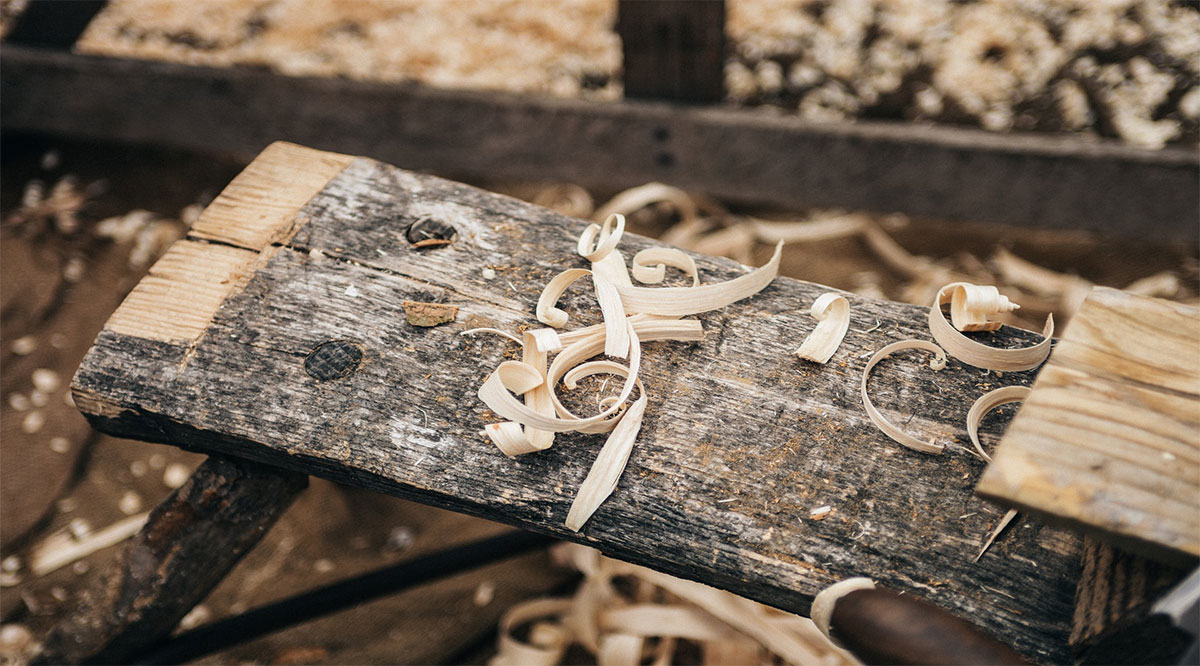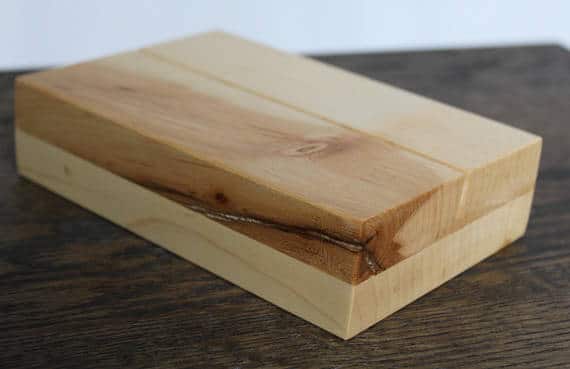Choosing the right type of wood for your bed frame is an important decision that can significantly impact the quality and longevity of your bed. With so many different types of wood available, each with its unique characteristics, it can be challenging to determine which one best fits your needs.
In this article, we will explore the best types of wood for bed frames and compare their features, benefits, and drawbacks. Whether you're looking for a classic, elegant look or a more modern, minimalist style, this guide will help you decide and choose the perfect wood for your bed frame.

Read Next
Factors To Consider
Other than solid wood, many types of wood are used, such as MDF (medium-density fibreboards), particle boards, plywood, and more.
Your preferences regarding wood for bed frames will depend on various factors. There are a few factors you consider when choosing the ideal wood type for your bed.



Difference Between Hardwood And Softwood
The main difference between hardwood and softwood is the type of tree they come from. Hardwood comes from broad-leaved deciduous trees, such as oak, maple, and cherry, while softwood comes from coniferous evergreen trees, such as pine, cedar, and spruce.
In terms of physical properties, hardwood is generally denser and harder than softwood, making it more durable and resistant to wear and tear. Hardwood is also less prone to dents and scratches, making it a popular choice for high-traffic areas and furniture designed to last for many years.
Softwood, on the other hand, is generally less dense and more lightweight than hardwood. This makes it easier to work with and more affordable than hardwood. Softwood is also more readily available, making it a popular choice for construction materials like lumber and plywood.
Both hardwood and softwood have unique strengths and weaknesses, and the choice between them will depend on your specific needs and preferences. When choosing between hardwood and softwood, consider factors such as durability, appearance, cost, and availability to make an informed decision.



Price Range
The woods are available at different prices, ranging from expensive to economical. For instance, plywoods used in beds are highly economical and durable at the same time. Woods such as mahogany, rosewood, ash, and oak all offer quality but are on the costly end of the price scale.



Grain
The grain of the wood depends on factors such as the wood's cell structure. Usually, hardwood has tubular cell structures called vessels, which are visible pores on the wood.
However, hardwood is either an open-grained wood or a closed-grain wood. To be specific, wood types such as beech, maple, cherry, and satinwood fall under the open-grain woods category. The grains also impact the texture of the wood, especially if the cells have a smooth cell texture.



Best Types Of Wood For Bed Frames
There are two main categories of wood types for bed frames, softwood, and hardwood. The common types include:
Hardwood Types
Maple



When choosing the best furniture woods, maple is among the top-ranking bed frame types. It makes up for a unique wood type for bed frames and is not too prone to wear or shrinking.
Carving maple is more challenging, and you can dye it for decorative applications. Plus, it's available in a softer form, which is often acquired from red or silver maple trees.
Cherry
Considered to be the finest fruitwood type, cherry is common for its durability and beautiful, appealing brow color. It’s also resistant to various issues such as warping, swelling, shrinking, etc.
Furthermore, you can use cherry wood to make heavy-duty bed frames and easily carve embellishments for the headboard.
Birch
Birch is another common wood type used to make bed frames. However, it's not easy to manipulate to create intricate details. As such, it's ideal for making suitable and modern bed details.
Mahogany
There are many benefits associated with using mahogany for bed frames. Mahogany is decay resistant, durable, and stable. Furthermore, it's popular in the wooden furniture industry and easy to carve for your bed. The material also makes up for some of the best materials for cabinetry. The colors can vary from reddish-brown to tan.
Oak
Oak is famous for its exceptional moisture-resistant levels. Thus, if you live in an area with excessive humidity levels, you might need a bed frame with the characteristics of oak wood. Furthermore, the other benefit of oak is that it can withstand insect and fungal attacks.
Walnut
The main benefit of walnut is that it’s easy to smoothen for the perfect finish. As such, it makes for various components such as headboards, footboards, and even beds. The main characteristic of this wood type is that it's tight-grained and resistant to swelling issues.
Poplar
As one of the most common wood types in the construction of bed frames, poplar has a light tan shade. That said, it classifies as one of the weakest types of wood for bed frames. More so, it's also exceptionally durable and resistant to issues such as shrinking than most types of wood.
Softwood Types
Remember that softwood is a term used to describe trees that fall under the conifer category. These types of wood grow fast, which makes them common for furniture applications. The cheaper version of these two categories makes them highly convenient to use. In making bed frames, these are the main types of wood used:
White Pine
This an excellent example of where there is a tradeoff for durability in the face of availability. Even if white pine is readily available and straightforward, it is prone to swelling and shrinking issues. Plus, since it's soft, the wood typically wears out fast.
Yellow Pine
Due to its grainy composition, you should avoid yellow pine when you need materials that have to be exposed. It's available in several shades of orange, yellow, and tan. Sometimes, it's overlooked because it does not often have an excellent finish.
Cedar
Common for decorative panels, cedar shades are different and might include brown to white colors. Furthermore, cedar is a type of wood that is common in the production of furniture. It's also an excellent moth repellent. However, it's also soft and won't provide longevity.
Conclusion
This guide goes in-depth into the best types of wood for bed frames. The beds classify under softwood and hardwood categories. Remember that the softwoods are not necessarily soft, but they don’t provide the same longevity as the hardwoods. Since hardwoods grow relatively slowly and require more effort to prepare, they are typically available at higher costs.





Comments
No Comments